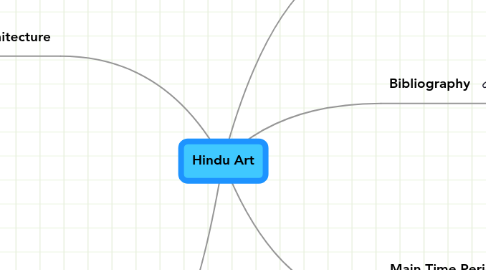
1. Hindu Architecture
1.1. Styles
1.1.1. Temples
1.1.1.1. Has multiple rooms
1.1.1.1.1. The sanctuary
1.1.1.1.2. Vimana
1.1.1.1.3. Shikhara
1.1.1.1.4. Garbha Grifa
1.1.1.1.5. Mandapa
1.1.1.2. Roof architecture
1.1.1.2.1. In some parts of india, he ascending pyramid roof format was not followed.
1.1.1.3. A courtyard would be built around the temples temporaroly
1.1.1.3.1. sometimes whole walls would be built around the temple to secure seclusion
1.1.1.3.2. The outside walls were treated by carving in an orderly group of repetitive miniatures
1.1.1.4. two types of archetectural style
1.1.1.4.1. Nagara
1.1.1.4.2. Dravida
1.1.1.5. the temple is representation of the macrocosm(the universe) and microcosm(the inner space)
1.1.2. Homes
1.1.2.1. most homes are very simple
1.1.2.2. almost all Hindu homes are equiped with a worship room
1.1.2.2.1. these rooms are filled with mini statues of deities, and sometimes incence
1.1.2.2.2. very simple and calm, to bring serenity to the person worshipping/praying to the gods
1.1.2.3. Vaastu Shastra
1.1.2.3.1. in sanskrit, vaastu means a building or structure
1.1.2.3.2. Hindus believe that there are forces around them at all time, some positive and some negative, sorrounding us at all times
1.2. Materials
1.2.1. most popular materials
1.2.1.1. stone is most commonly used
1.2.1.1.1. stone is used more now because it lasts for centuries longer, a
1.2.1.1.2. also much easier to carve into
1.2.2. in the early years of Hindu Architecture, they used brick and wood
2. Hindu Painting
2.1. Styles
2.1.1. in Hindu Art, the deities are the most popular to paint
2.1.1.1. they are often drawn curvy, and voluptious
2.1.1.2. it is holy to have pictures of the gods in your home; they will bring you prosperity and good luck
2.2. Materials
2.2.1. oil paint is used
2.2.2. paint is painted onto silk, and paper
2.2.2.1. on ocassion, paintings will be painted on a marble top
2.3. "Om. Painting cleanses the mind and curbs anxiety, augments future good, causes the greatest delight, kills the evils of bad dreams and pleases the household deity. Painting is the best of all arts and is conducive to dharma (right conduct) and moksha (emancipation)" Vishnudharmottara
2.3.1. this quote describes the importance of painting in the Hindu culture, and its relevance to dharma
3. Hindu Sculpture
3.1. Styles
3.1.1. Religious Sculpture
3.1.1.1. the majority of Hindu sculpture depicts the gods and goddesses
3.1.1.1.1. these sculptures are are a pathway to the gods; a way to communicate with the divine
3.1.1.1.2. most sculptures depict the gods Hanuman, Vishnu, Krishna, and Lakshmi
3.1.2. Other styles of sculpture display
3.1.2.1. some Hindu sculptures depict temples
3.1.2.1.1. temples in the home are yet another way to connect with their faith at home
3.1.2.1.2. these tend to be the largest sculptures, ranging up to ten feet wide
3.2. Materials
3.2.1. some materials used are bronze, copper, stone, clay, and resin
3.2.1.1. clay and stone are most commonly used
3.2.1.1.1. this is because they cost less, so during holidays they can be created and soon after be destroyed without the loss of too much money
3.2.1.2. in the beggining, only stone and bronze were used to carve
4. Main Time Periods of Hindu Art
4.1. THE GUPTA PERIOD
4.1.1. 4th - 6th centuries
4.1.1.1. the major trends of Hinduism had crystallized
4.1.1.1.1. In addition to the division of society into castes came a partitioning of the Hindu religion into sects and devotional cults.
4.1.1.1.2. Hinduism also benefited from royal support and therefore the religion retained the popularity that it has once lost to Buddhism retained the supremacy that it had lost to Buddhism.
4.1.1.2. Chandra Gupta II died in 415 and was succeeded by his son, Kumara Gupta, who maintained India's peace and prosperity
4.1.2. artists
4.1.2.1. Nihâl Chand.
4.1.2.1.1. most famous artist during this time
4.1.3. also known as the Golden age
